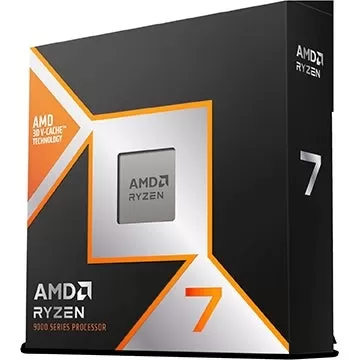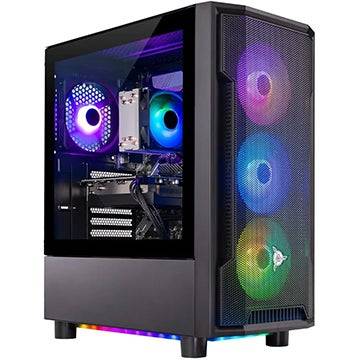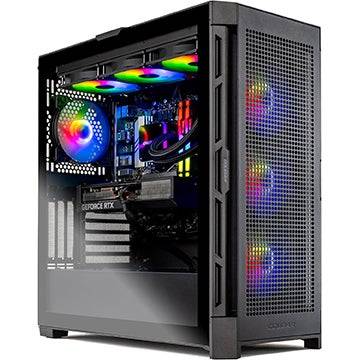The AMD Radeon RX 9070 enters the market at an intriguing juncture, following closely on the heels of Nvidia’s latest generation of graphics cards. Priced at $549, it directly competes with the underwhelming GeForce RTX 5070. This competition is one that AMD is currently winning, positioning the Radeon RX 9070 as a prime choice for 1440p gaming enthusiasts.
However, the situation is nuanced. The Radeon RX 9070 is only $50 less than the superior Radeon RX 9070 XT. This small price gap, while mathematically justifiable—the RX 9070 is about 8% slower and 9% cheaper than the 9070 XT—makes it challenging to opt for the RX 9070 over its more powerful sibling. Nonetheless, when choosing between these two AMD offerings, Team Red presents a compelling case.
Purchasing Guide
The AMD Radeon RX 9070 is set to launch on March 6, with a starting price of $549. However, various models may be priced higher. For those considering the RX 9070, it's advisable to purchase a version as close to the starting price as possible, given its close pricing to the Radeon RX 9070 XT.
AMD Radeon RX 9070 – Photos
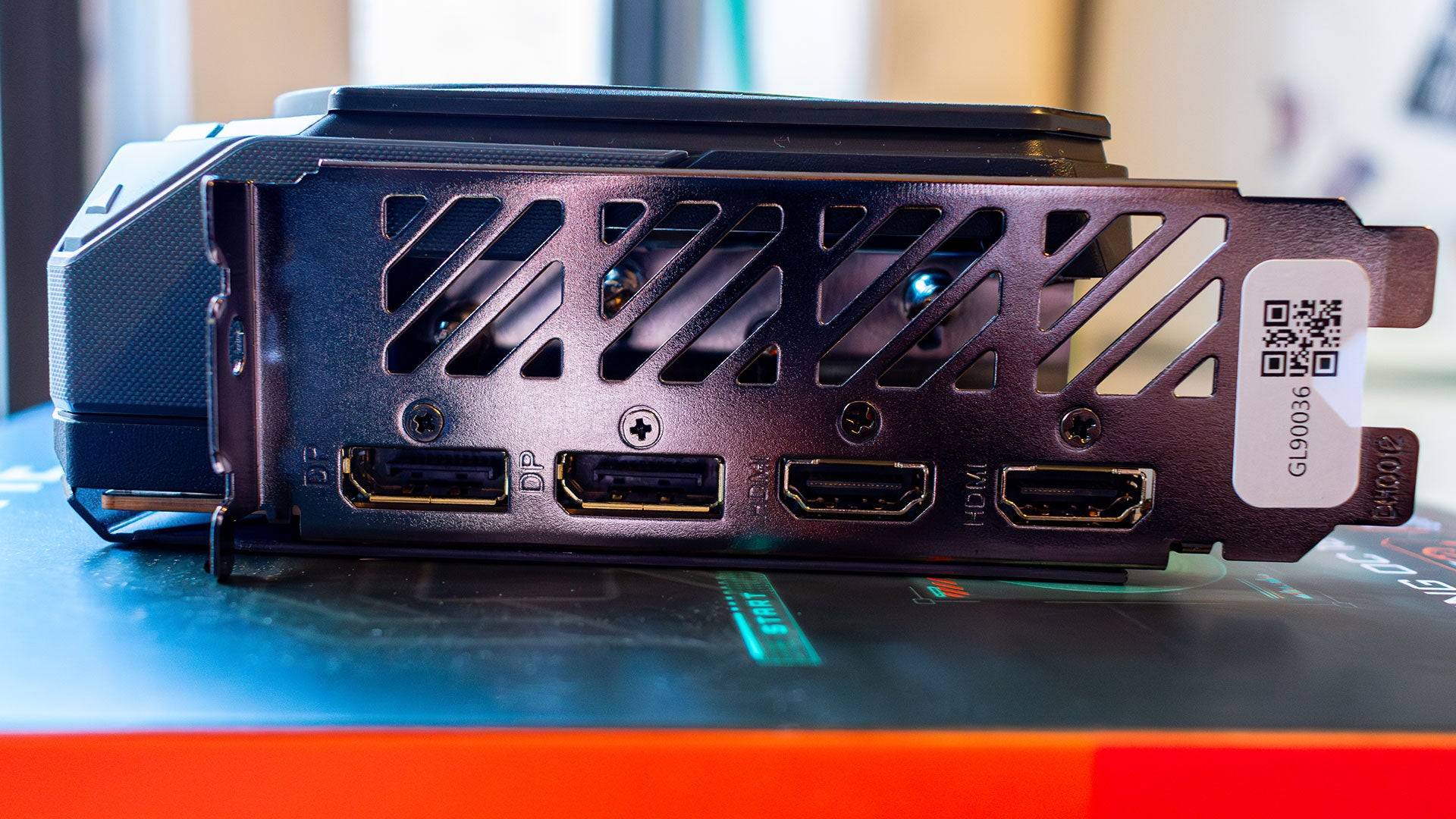
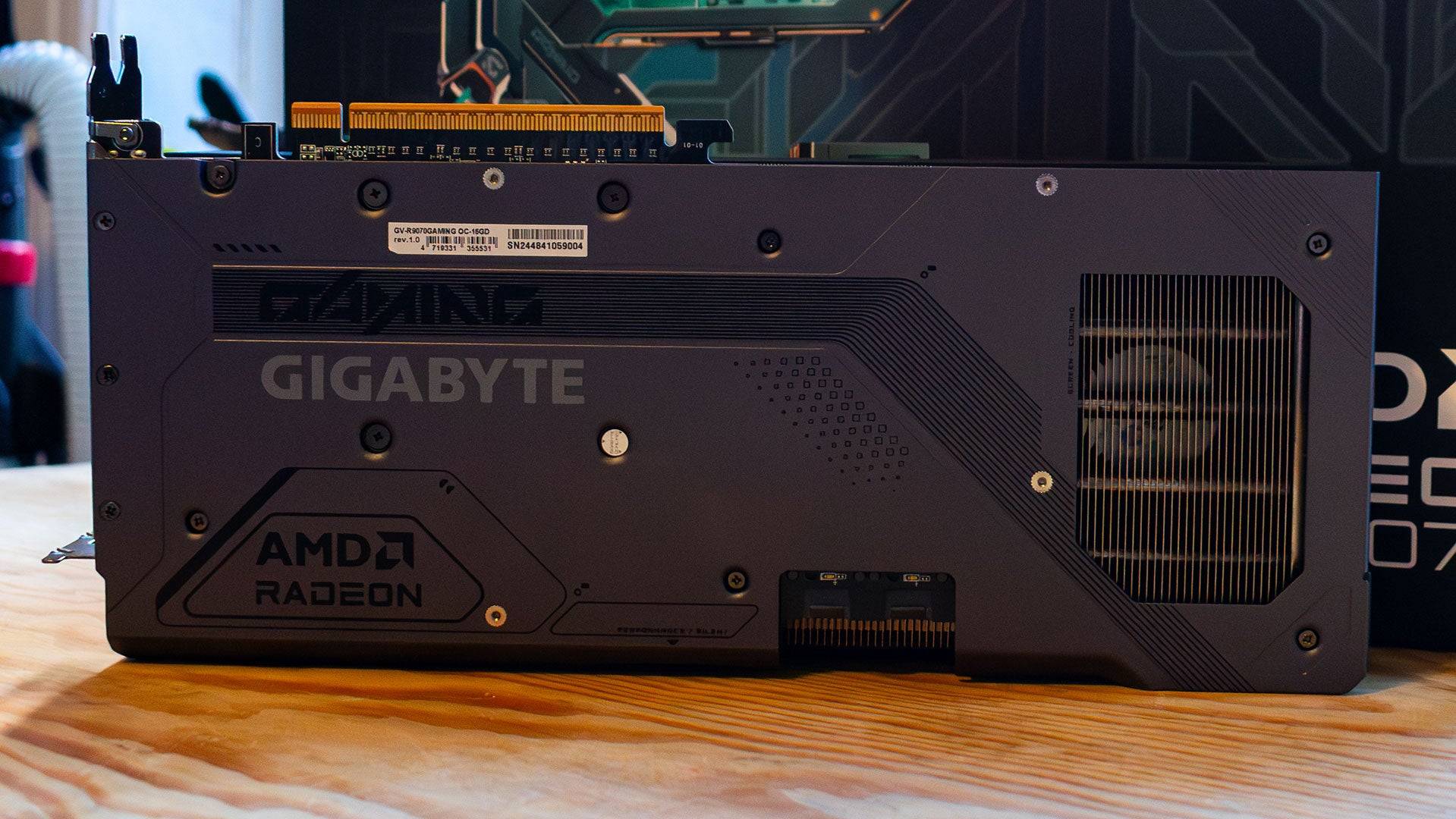 4 Images
4 Images
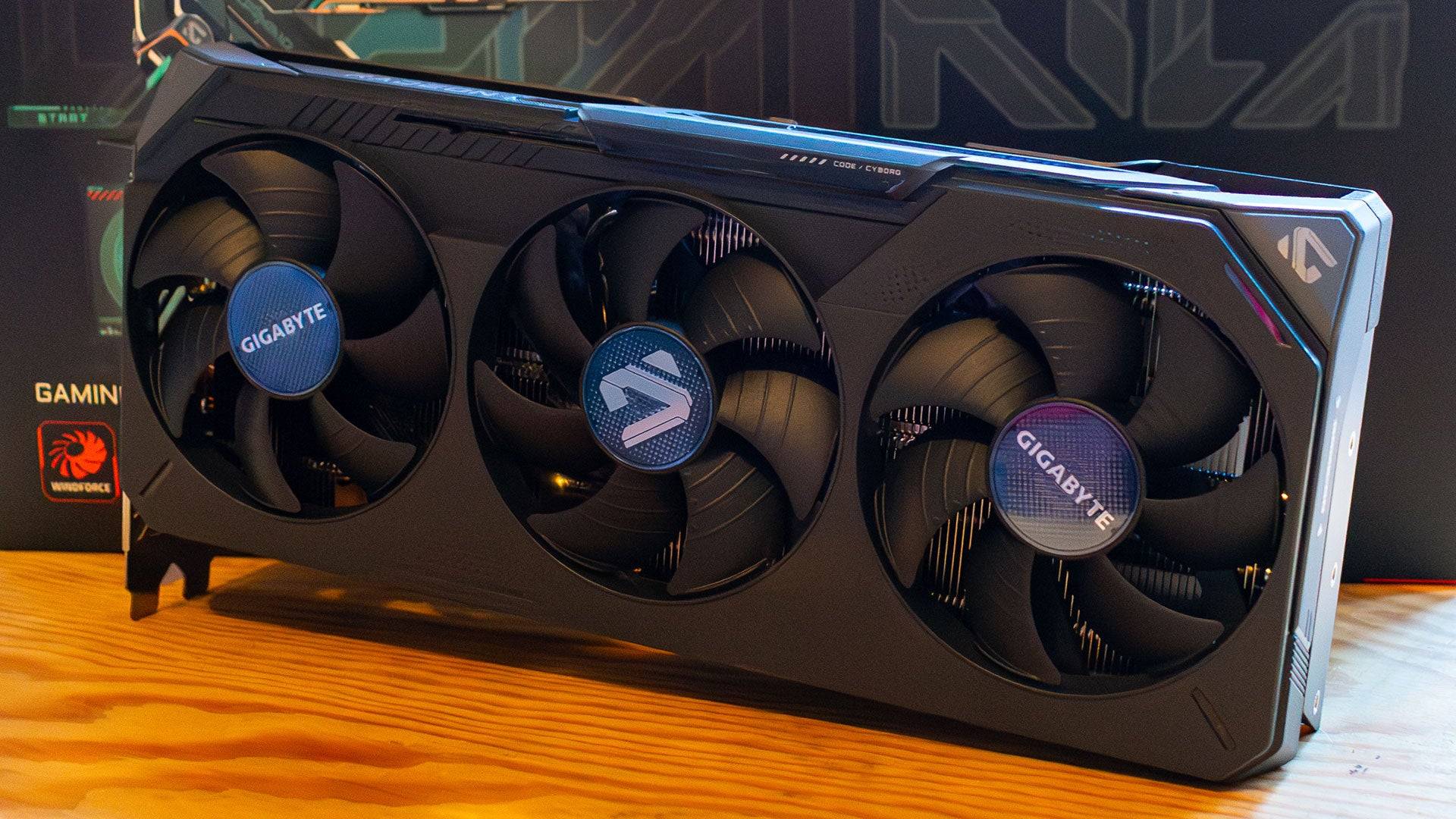
Specs and Features
Like the AMD Radeon RX 9070 XT, the RX 9070 leverages the new RDNA 4 graphics architecture. This architecture significantly boosts performance, enabling the RX 9070 to outperform its predecessor, the Radeon RX 7900 GRE, despite having 30% fewer compute units.
The Radeon RX 9070 boasts 56 Compute Units, each with 64 Streaming Multiprocessors (SMs), totaling 3,584 shaders. Each compute unit includes one Ray Accelerator and two AI Accelerators, summing up to 56 and 112 respectively. The enhancements in Ray and AI Accelerators allow the RX 9070 to excel in games with ray tracing. Additionally, the AI Accelerators have been upgraded to support the introduction of FidelityFX Super Resolution (FSR) 4, bringing AI upscaling to AMD graphics cards for the first time.
Similar to the 9070 XT, the RX 9070 is equipped with 16GB of GDDR6 VRAM on a 256-bit bus. This configuration is akin to the 7900 GRE and should suffice for 1440p gaming for years to come. Although GDDR7, as used by Nvidia, would have been preferable, it likely would have increased the price.
AMD recommends a minimum 550W power supply for the RX 9070, which has a power budget of 220W. My tests, however, showed peak power consumption at 249W, suggesting a 600W PSU for safety.
Notably, AMD is not releasing a reference design for the RX 9070, marking a shift from recent generations. All versions will be produced by third-party board partners. I tested the Gigabyte Radeon RX 9070 Gaming OC 16G, a triple-slot card with a slight factory overclock.

FSR4
Since the rise of DLSS in 2018, AI upscaling has been a key method to enhance performance while maintaining image quality, primarily on Nvidia GPUs. However, FSR 4 changes the game by introducing AI upscaling to AMD GPUs.
FSR 4 utilizes previous frames and in-game data, processing them through an AI model to upscale lower resolution images to the native resolution. This differs from the Temporal upscaling of FSR 3, which lacked an AI algorithm and could result in artifacts like ghosting.
While FSR 4 incurs a slight performance hit due to the AI model, it offers superior image quality. For example, in Call of Duty: Black Ops 6 at 1440p on the Extreme preset, FSR 3 achieved 165 fps, while FSR 4 dropped to 159 fps. Similarly, in Monster Hunter Wilds at 4K with ray tracing, the RX 9070 managed 81 fps with FSR 3, but 76 fps with FSR 4.
The Adrenalin software includes a toggle for FSR 4, allowing users to choose between better image quality or slightly higher performance. For single-player games, I prefer FSR 4, but FSR 3 might be better for fast-paced online games like Marvel Rivals.
AMD Radeon RX 9070 XT & 9070 – Benchmarks
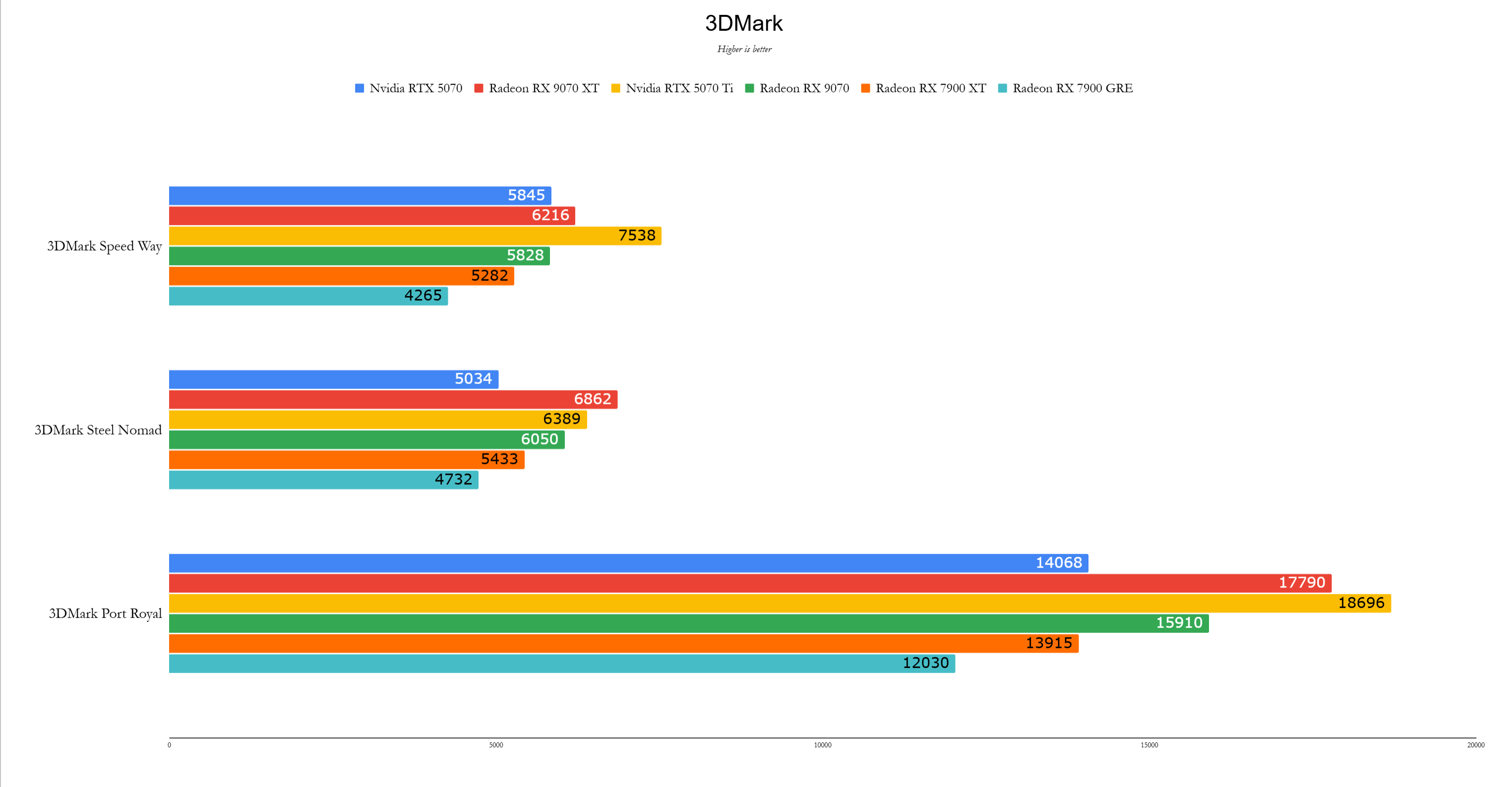
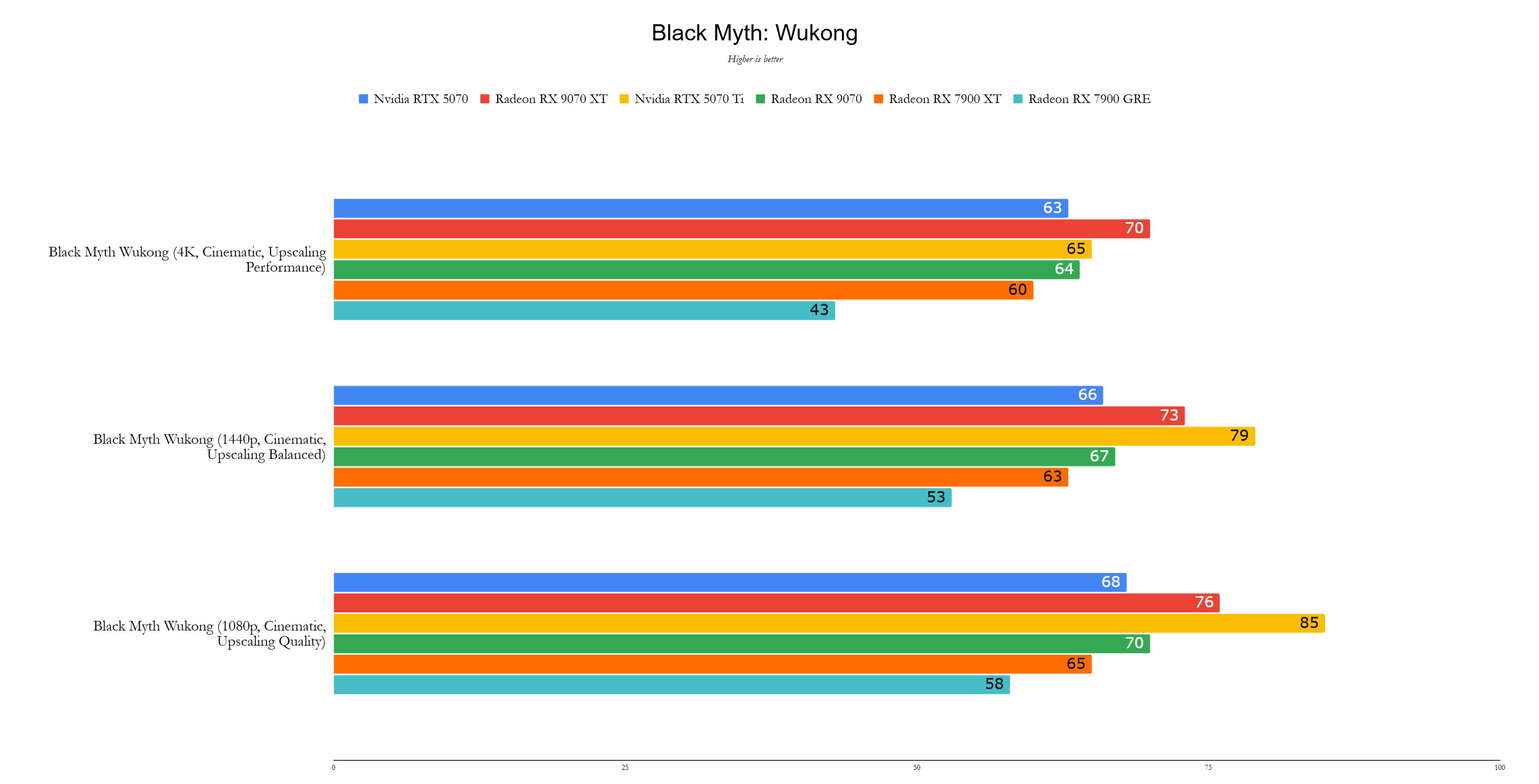 11 Images
11 Images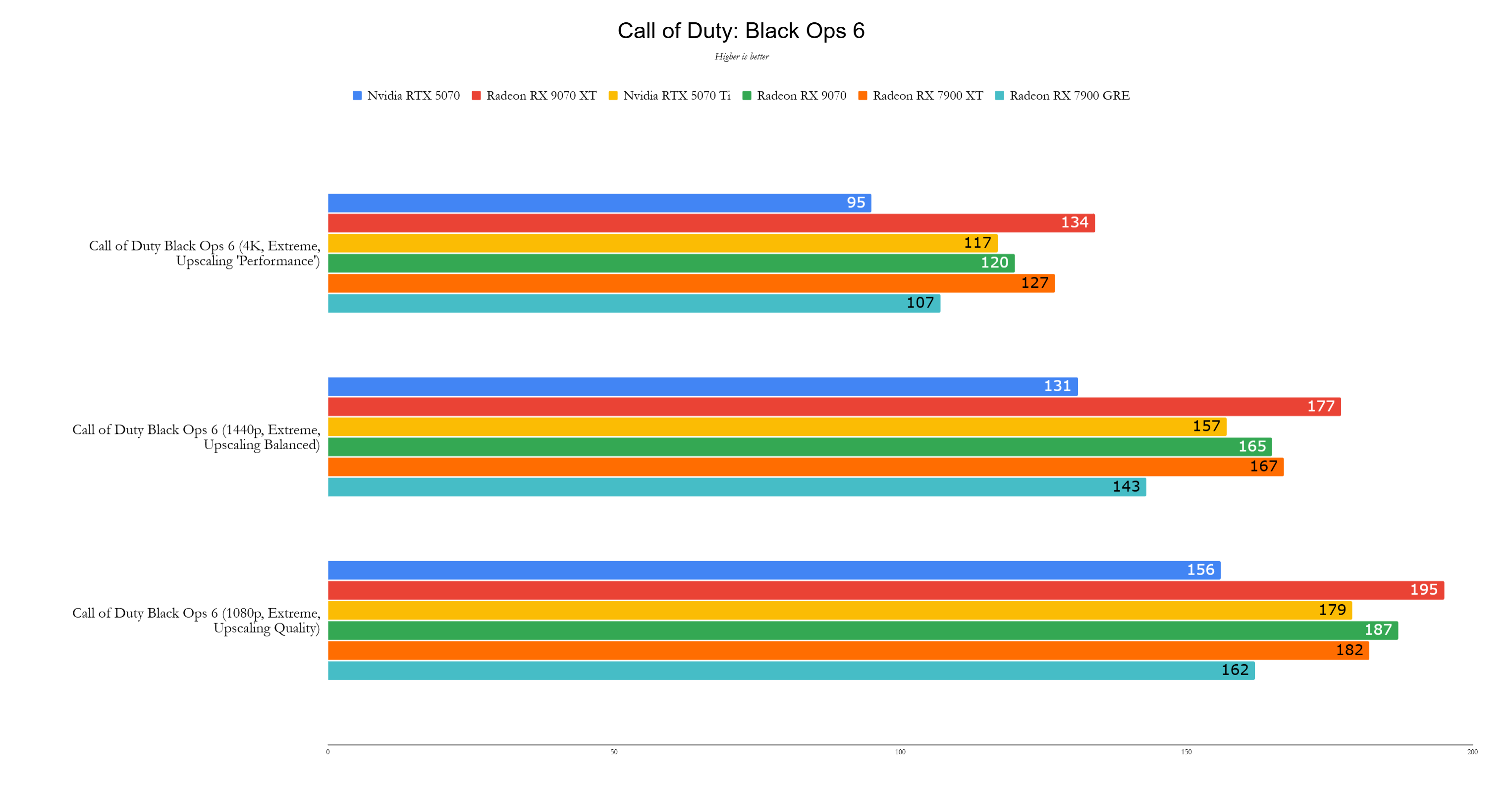
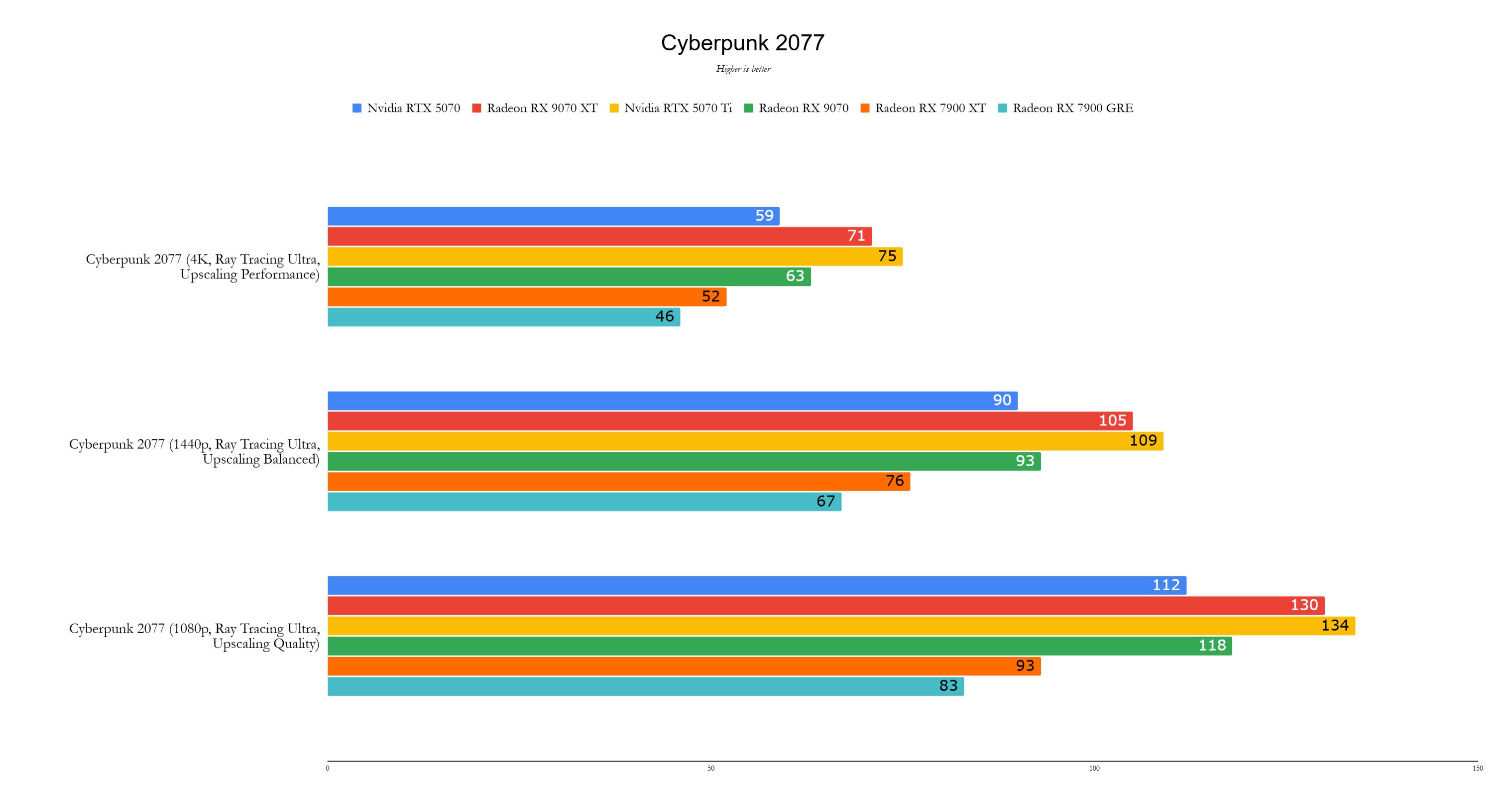
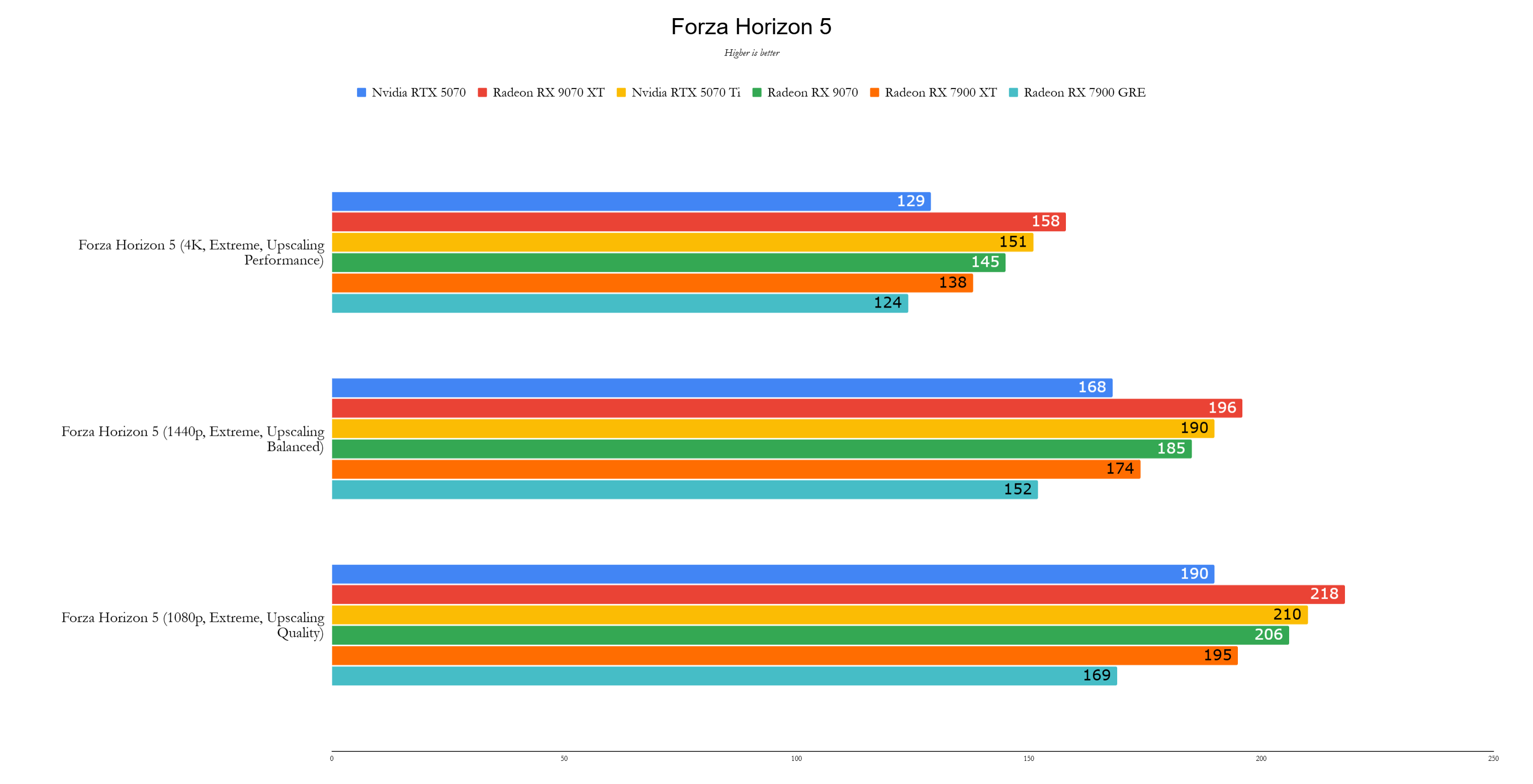
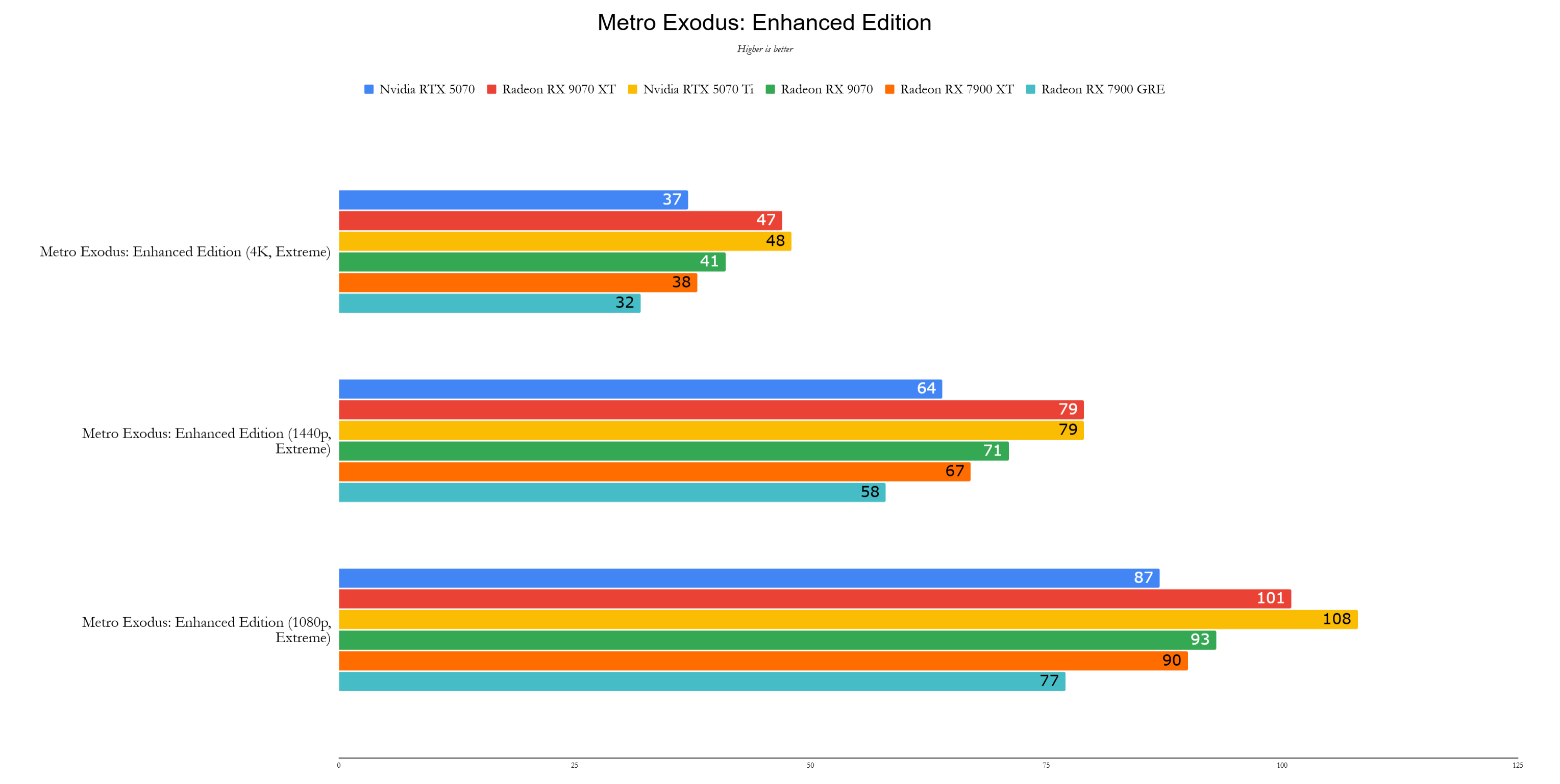
Performance
Priced at $549, the AMD Radeon RX 9070 directly challenges the Nvidia GeForce RTX 5070 and frequently outperforms it. At 1440p, the RX 9070 averages 12% faster than the RTX 5070 and 22% faster than the RX 7900 GRE, despite having 30% fewer cores.
My testing used a factory overclocked version of the RX 9070, the Gigabyte Radeon RX 9070 Gaming OC, which had a boost clock of 2,700MHz, roughly a 7% increase. This overclock should boost performance by about 4-5%.
All graphics cards were tested using the latest public drivers at the time of writing. Nvidia cards used Game Ready driver 572.60, while AMD cards used Adrenalin 24.12.1. Review drivers were used for the RX 9070, 9070 XT, and RTX 5070.
In 3DMark's Speed Way test with ray tracing, the RX 9070 scored 5,828 points, nearly matching the RTX 5070’s 5,845. In the Steel Nomad test without ray tracing, the RX 9070 significantly outscored the RTX 5070, achieving 6,050 points to 5,034.
Test System
- CPU: AMD Ryzen 7 9800X3D
- Motherboard: Asus ROG Crosshair X870E Hero
- RAM: 32GB G.Skill Trident Z5 Neo @ 6,000MHz
- SSD: 4TB Samsung 990 Pro
- CPU Cooler: Asus ROG Ryujin III 360
Call of Duty: Black Ops 6, showcased by AMD at CES 2025, saw the RX 9070 achieving 165 fps at 1440p with FSR 3 set to Balanced, outperforming the RTX 5070's 131 fps and the RX 7900 GRE's 143 fps.
In Cyberpunk 2077, traditionally favoring Nvidia, the RX 9070 still managed a 3% lead over the RTX 5070 at 1440p with Ray Tracing Ultra settings.
Metro Exodus, tested without upscaling, saw the RX 9070 achieving 71 fps compared to the RTX 5070’s 64 fps, marking an 11% lead.
Red Dead Redemption 2 using Vulkan showed the RX 9070 leading with 142 fps at 1440p, against the RTX 5070's 115 fps.
Total War: Warhammer 3 showed a tight race at 1440p, with the RX 9070 at 135 fps and the RTX 5070 at 134 fps.
In Assassin's Creed Mirage, the RX 9070 achieved 193 fps at 1440p with the Ultra preset and FSR set to Balanced, compared to the RTX 5070's 163 fps.
Black Myth Wukong, a game favoring Nvidia, resulted in a close contest, with the RX 9070 at 67 fps and the RTX 5070 at 66 fps at 1440p.
Forza Horizon 5 saw the RX 9070 achieving 185 fps at 1440p, compared to 168 fps for the RTX 5070 and 152 fps for the RX 7900 GRE.
The Radeon RX 9070's launch timing against the RTX 5070 benefits AMD significantly. Both cards are priced at $549, but the RX 9070 consistently outperforms the RTX 5070 across various tests. Furthermore, the RX 9070's 16GB of VRAM ensures better longevity, even if it uses slightly slower GDDR6 compared to the RTX 5070's GDDR7. With superior performance and more VRAM, the Radeon RX 9070 stands out as the better value choice.

